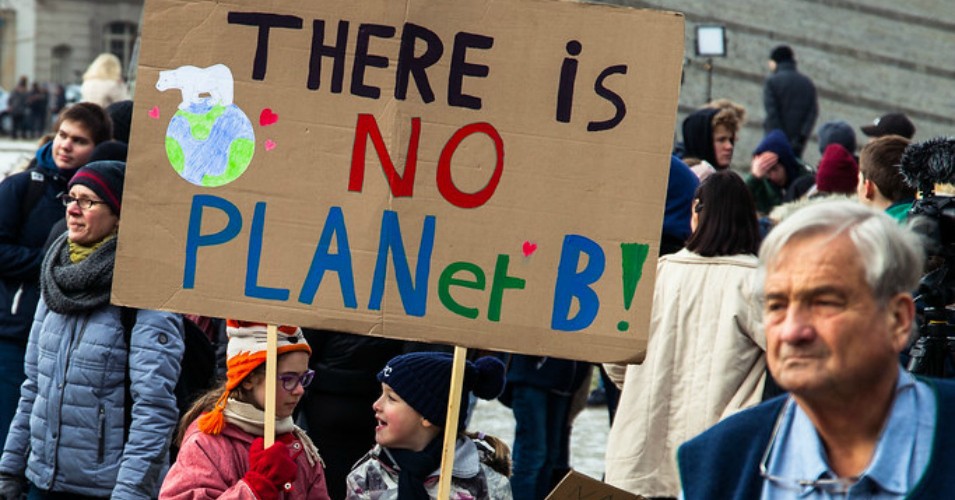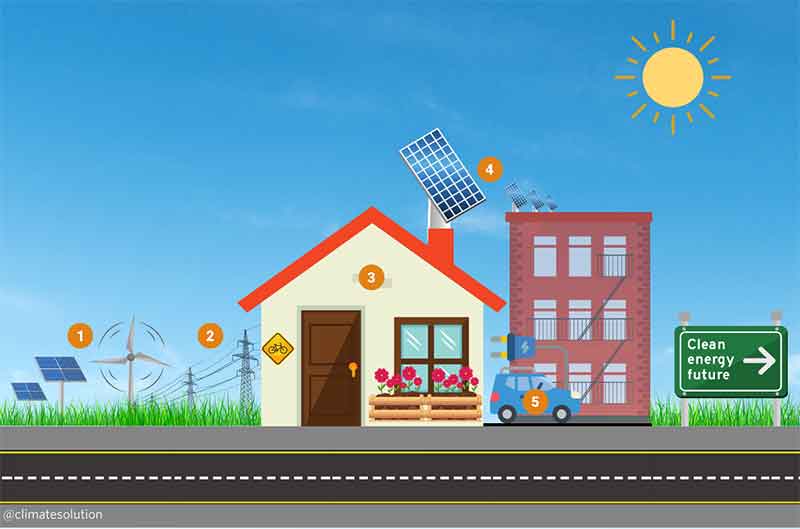
We are about to go through the most profound shift in the climate debate in 20 years. The result will be the end of the gas industry’s hope of being a transition fuel, a brutal market disruption to the agriculture and livestock industries and the arrival of the climate emergency into public consciousness. This will all be driven by the acceptance of methane as the critical response to the climate emergency.
The Climate Emergency Arrives
As always on climate change, the underlying driver is the science. In this regard, the latest IPCC report was crystal clear. Our climate is changing; we’re suffering severe consequences decades earlier than predicted; the impacts will keep getting worse; we’re facing tipping points which could trigger runaway warming; and we’re rapidly running out of time. By any interpretation we now face a full-blown climate emergency.
While many lament the lack of earlier action, that is typical of how we behave. We wait for a crisis to be underway and then respond dramatically. It’s inefficient, it’s expensive, it’s frustrating and it’s how we always do things. We took this approach in WWII, to the 2008 global credit crisis and to the COVID19 pandemic. It was always going to be like this with climate change.
What we now confront then is kind of good news. Faced with the existential risk of runaway climate change and resulting global economic collapse, we are far more likely to take the action. However, as Professor Jorgen Randers and I argued in our 2009 paper The One Degree War Plan, acting this late requires a profoundly different approach than what would have worked 20 or 30 years earlier. It requires a dramatic reset of assumptions about the pace of change, the type of actions needed and the economic disruption that will result.
From Emissions to Warming and therefore from a Climate Emergency to a Methane Emergency
The most important shift is that we must now switch focus to quickly slowing physical warming. Despite sounding obvious, this is not the focus of any government policy or of international negotiations. Almost all current proposals assume a primary focus on reducing CO2 emissions. This is the right approach to long term climate stabilisation – but we now face tipping points and these are driven by warming not by emission levels.
Even rapidly accelerating the end of fossil fuel burning will not slow warming in a timeframe relevant to this threat. If we don’t change our approach there is a reasonable likelihood the climate will go through tipping points that will then self-accelerate and we will have lost control. The road to economic collapse and global chaos is then quite a short one.
To slow warming we must keep our focus on cutting CO2 but now also focus intensely on the shorter lived, far more potent gases such as methane.
The science explains this. Whereas CO2 drives warming slowly over a century, methane drives warming quickly – in around a decade. During this time, it is very potent. While methane is often reported as having 28 times more warming impact than CO2, this is when the two are compared over 100 years. That timeframe is now irrelevant given the challenge we face – which is to reducing warming in a decade. Over 10 years, methane is in the order of 90-115 times more dangerous than CO2. It is the nuclear weapon of climate change – a weapon of mass destruction.
This is a game changer for the climate debate and has enormous economic and market consequences. It is also an idea that is rapidly gaining traction.
Will we respond to this? As I argued in The Great Disruption, “we are slow…but not stupid”. While we ignored forecasts about future risks that were decades away, we are less likely to ignore what we face now – which is a ‘clear and present danger’. As a result, the climate emergency will become a methane emergency. The implications for climate policy, for public attitudes and for the market are profound. It will threaten whole market sectors and create whole new ones.
The Market Impacts of a Methane Emergency
The brutal market, political and economic logic suggests the brunt of the impact will be felt by two sectors. It will be the final nail in the coffin for fossil fuels, including gas. Already in terminal decline, the industry will now need to be largely gone – at least in their twilight years – within a decade. Secondly, livestock within agriculture will face transformation and/or disruption through a perfect storm of public and consumer pressure, policy action and new technologies. Beef and dairy in particular will have to radically transform, or shrink to a small fraction of their current size. This is all predictable. Let’s work through the logic of why.
Fossil fuels account for 35% of methane emissions – this is leakage during coal, oil and gas production and use and mostly referred to as ‘fugitive emissions’ because they are unintended. Waste is 20% – from industrial, commercial and residential organic waste. Agriculture is 40% – primarily livestock but especially beef and dairy. We can consider each of them against the question of what can realistically be achieved in a decade.
-
Fossil fuels: Most analysts argue that rapid and significant methane emission reductions could be achieved by eliminating fugitive emissions from fossil fuels. While technically this is correct it ignores both market and political reality. Investing in reducing fugitive emissions only makes sense if the industry has a long-term future, which this one doesn’t. The asset structure and the current financial state of the industry, their effective leverage over policy makers, and the capital investment required makes it highly unlikely targeting fossil fuels would result in any significant methane reduction impacts within a decade. The industry is increasingly uncompetitive and capital constrained, with high debt ratios, falling asset values, volatile prices, and failing consumer and investor sentiment – all while the accelerating energy transition reduces demand. It is effectively an industry in terminal decline, meaning there is negligible likelihood they will invest in cleaning up their methane emissions. They didn’t do so when they were strong and profitable, so they certainly won’t when they are weak and in decline.
-
Waste: The responsibility for managing emissions from organic waste is disconnected from its production. This highly distributed system – managed at a municipal level yet generated from multiple consumer supply chains, is complex to shift. Besides its contribution is the smallest – it’s important, but it won’t change the game.
-
Agriculture: This leaves agriculture, with livestock and especially beef and dairy, inevitably being hit the hardest. Industrial scale operations will be forced to transform as costs and consumer expectations increase, and public, investor and government support declines – all driven by public and political acceptance of the climate emergency and methane being a key lever in response.
How this will Unfold for Livestock and Agriculture
The reason rapid change is feasible in agriculture, but not in energy, stems from structural differences between their markets. The old energy market is defined by large, long-life, slow-moving assets that provide energy to power long-life assets – cars, houses, industrial processes and factories. This makes change slow with long lead times and large capital costs. Agriculture is a different game. If you eat less meat or dairy this year, then less cows will be bred next year. If you demand your meat and dairy from low emission producers, they will also change their production processes next year.
The market here will follow the same path as energy but more rapidly and therefore more disruptively. Pressure to manage emissions will be similar to that on fossil fuels a decade ago but accelerate faster as the stakes are higher, and the market is primed. Practices and companies will be scrutinised and demonised, as activists, investors and policy makers shift their focus – now with an emergency mindset. For example a pre-pandemic study found that in one year, the top five meat and dairy companies combined (JBS, Tyson, Cargill, Dairy Farmers of America and Fonterra) had more emissions than Exxon or Shell or BP. NGOs, IGOs and governments will inevitably shift to focus on them. In response, consumers, will further reduce consumption and seek-out lower emission alternatives.
With the market engaged, solutions of all types will boom – new protein, cleaner protein, emissions reduction technologies and plant-based food. Investors will pile into the growing space, joined by large global FMCG companies like Nestle and Unilever who smell the winds of change and act due to fear of losing to market disruptors. And because the capital and consumer structures allow it, this market change will accelerate rapidly, as we see already emerging today.
Incumbent players will use arguments about livelihoods and culture to try to delay action. However they will fail because they will be overwhelmed by an emergency mentality that will be leveraged by those market players that stand to win.
All this suggests the agricultural and food sectors are our most likely path to achieve the methane reductions and cooling required to stave off runaway warming and economic collapse. It may be the only chance we have of doing so.
The methane emergency has arrived. We are slow… but not stupid.
This article summarises key arguments in a more comprehensive research paper which is currently under expert review. Copies of that draft paper are available for comment on request.
Originally published by The Cockatoo Chronicles
Paul Gilding has spent 35 years trying to change the world, doing everything he can think of that might help. He’s served in the Australian military, chased nuclear armed aircraft carriers in small inflatable boats, plugged up industrial waste discharge pipes, been global CEO of Greenpeace, taught at Cambridge University, started two successful companies and advised the CEOs of some the world’s largest companies. Despite the clear lack of progress on the issues he’s focused on, the unstoppable and flexible optimist is now an author and advocate, writing his widely acclaimed book “The Great Disruption” which prompted Tom Friedman to write in the NYT “Ignore Gilding at your peril”. He now travels the world alerting people to the global economic and ecological crisis now unfolding around us, as the world economy reaches and passes the limits to growth. He is confident we can get through what’s coming and in fact thinks we will rise to the occasion, with change on a scale and at a speed incomprehensible today. He tells us to get prepared for The Great Disruption and “the end of shopping”, as we reinvent the global economy and our model of social progress. He lives on a farm in southern Tasmania with his wife, where they grow blueberries and raise chickens, sheep and their children. His blog, The Cockatoo Chronicles, can be found at www.paulgilding.com
















































